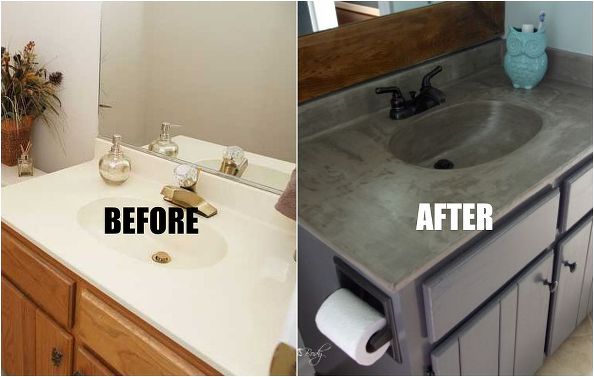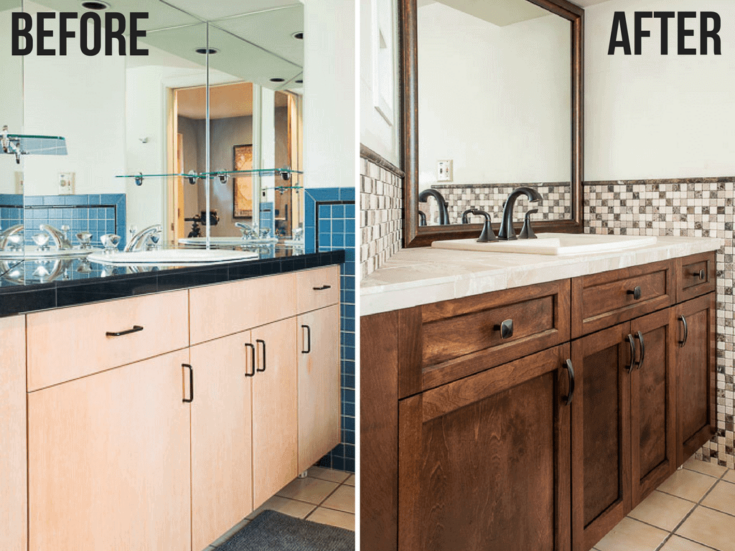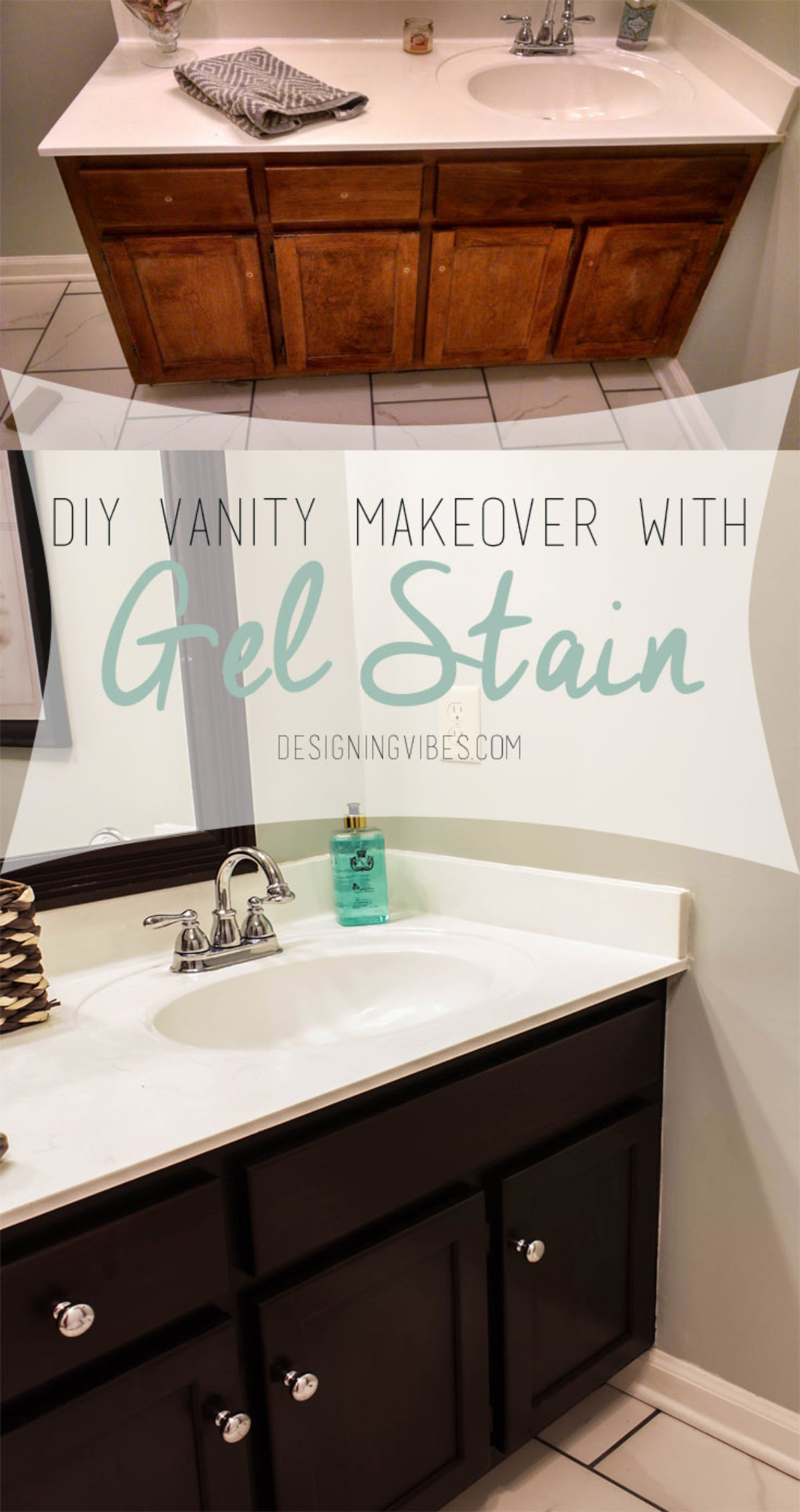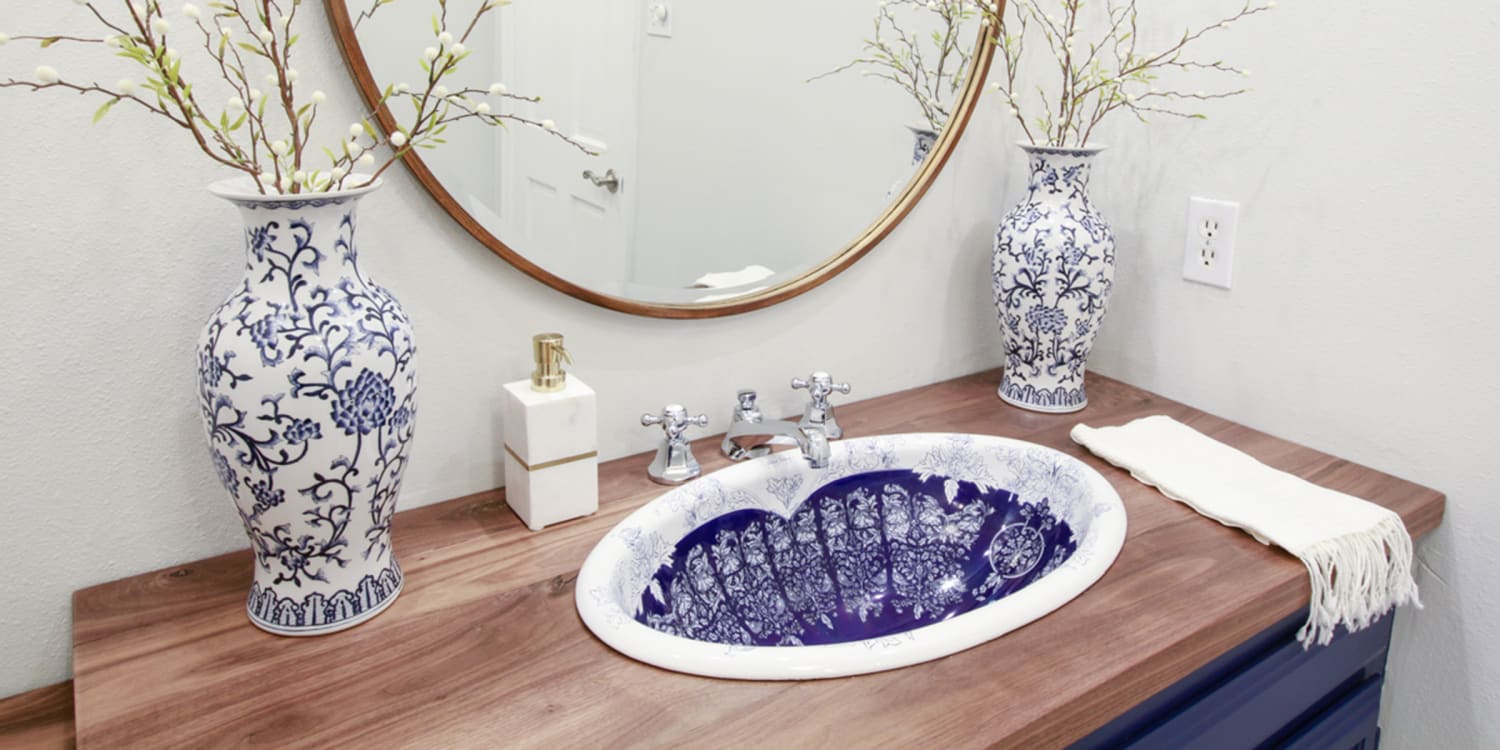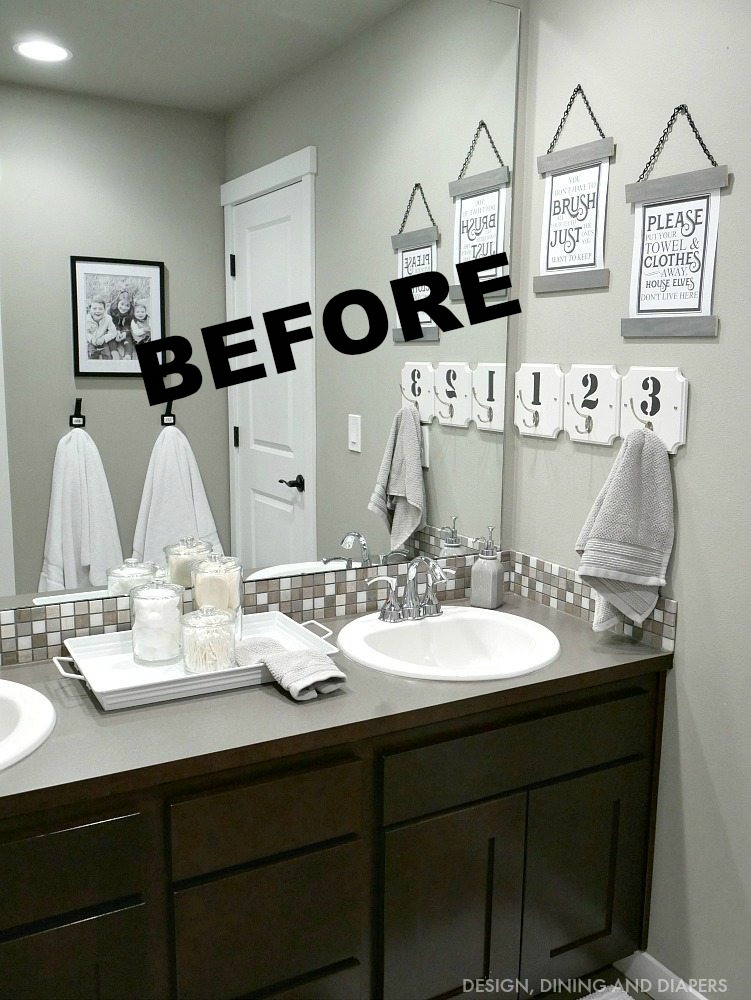Bathroom Sink Makeover: Transforming Your Space with Style
Embarking on a bathroom sink makeover is one of the most rewarding projects you can undertake in your home. The bathroom sink, though often overlooked, is a central feature that can set the tone for the entire space. Whether your sink has grown outdated, or you’re simply ready for a change, a thoughtful makeover can breathe new life into your bathroom, enhancing both functionality and aesthetics.
Assessing Your Current Bathroom Sink
Before diving into any renovation, the first step is always to assess what you currently have. Understanding the state of your existing sink will help guide your makeover choices, ensuring that you address any underlying issues while also meeting your aesthetic goals.
Begin by closely examining the sink’s material. Is it porcelain, ceramic, or perhaps a more modern material like glass or stainless steel? The material’s condition will inform whether you can work with it or if it requires replacement. For instance, minor chips or cracks in porcelain can often be repaired, while a heavily stained or scratched stainless steel sink might necessitate a complete replacement.
Next, consider the sink’s size and shape. Does it fit well within the bathroom’s overall layout, or does it feel cramped or out of place? If your sink feels too large or small, this could be an opportunity to select a more appropriately sized model that enhances the bathroom’s spatial harmony.
Plumbing is another critical aspect to assess. Check for any signs of leaks, slow drainage, or other plumbing issues. Addressing these problems during the makeover will save you from future headaches and ensure your new sink functions perfectly.
Also, take note of the faucet and fixtures. Are they outdated or corroded? Upgrading to more modern fixtures can drastically improve the sink’s appearance and functionality. Consider whether the current setup suits your needs or if you would prefer a single-handle faucet over a dual-handle, or perhaps a more high-tech touchless option.
Last, assess the surrounding area, including the countertop and backsplash. These elements often frame the sink and contribute to the overall look. If they’re outdated or damaged, you might want to include them in your makeover plans. By thoroughly assessing your current sink, you’ll have a clear understanding of what needs to be done, paving the way for a successful transformation.
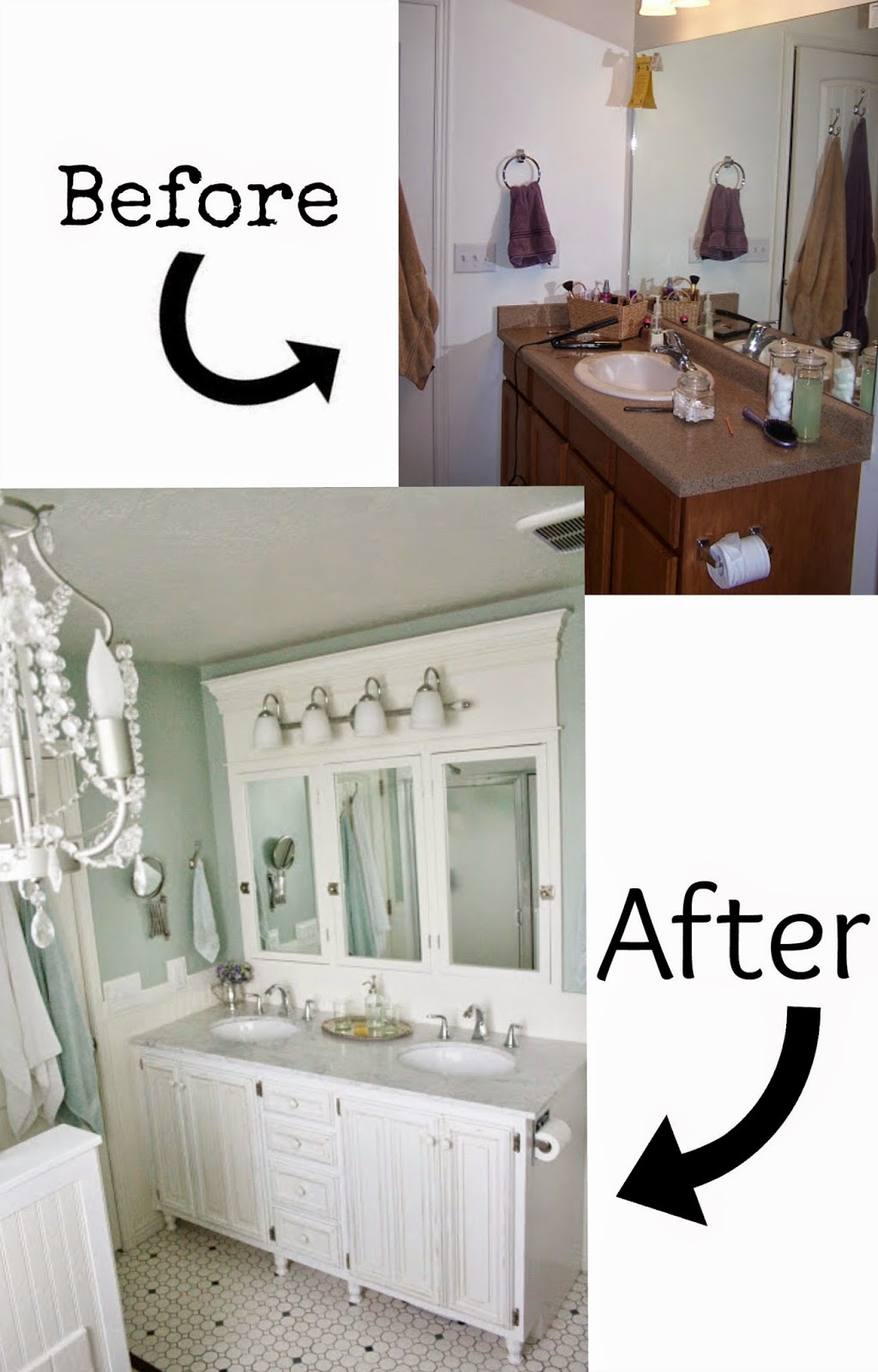
Choosing the Right Sink Style for Your Makeover
Selecting the perfect sink style is a crucial decision that will significantly impact the bathroom’s overall design. With so many styles available, it’s important to choose one that aligns with your taste and complements the existing bathroom decor.
The first option to consider is a pedestal sink. Pedestal sinks are ideal for smaller bathrooms where space is at a premium. They have a timeless, classic look that can make a bathroom feel more open and airy. However, they offer limited counter space, so if you rely on your sink area for storage, this might not be the best choice.
Another popular option is the vessel sink, which sits on top of the counter rather than being recessed into it. Vessel sinks make a bold statement and are available in various materials like glass, stone, and metal. They can add a touch of luxury and modernity to your bathroom, though they may require a higher faucet, which could affect your current plumbing setup.
Undermount sinks are a sleek, seamless option where the sink is mounted underneath the countertop. This style is perfect for those who prefer a minimalist, clutter-free look. It also makes cleaning easier, as there are no edges for dirt and grime to accumulate. However, undermount sinks can be more expensive to install and may require a new countertop.
Wall-mounted sinks are another space-saving solution, with the sink basin attached directly to the wall. This style frees up floor space, making it a good choice for small bathrooms or powder rooms. The downside is that it offers no counter space, so you’ll need to be creative with storage solutions.
Farmhouse or apron-front sinks, typically associated with kitchens, are making their way into bathrooms as well. These sinks have a deep basin and an exposed front, giving them a distinctive, rustic look. They are particularly well-suited for larger bathrooms or those with a vintage or country-inspired design.
Finally, consider an integrated sink and countertop unit, where the sink is built into the countertop itself. This option provides a seamless, modern look and is easy to clean, as there are no seams between the sink and the counter. However, it limits your material choices, as you must select a countertop that includes a sink.
Updating Fixtures and Faucets for a Fresh Look
The fixtures and faucets around your sink play a significant role in defining the bathroom’s style and functionality. Replacing outdated or worn fixtures can instantly modernize the space and enhance the overall aesthetic appeal of your sink area.
Start by selecting a faucet that complements the sink style you’ve chosen. For a pedestal sink, a traditional two-handle faucet might be the perfect match, adding to the classic vibe. If you’ve opted for a vessel sink, consider a tall, single-handle faucet that accommodates the height of the sink. Wall-mounted faucets are an elegant choice for vessel or wall-mounted sinks, offering a streamlined look and freeing up counter space.
When choosing faucet finishes, think about how they will coordinate with other elements in the bathroom. Chrome is a timeless option that works well with most styles and is easy to maintain. Brushed nickel and stainless steel offer a more subdued, modern look and are resistant to fingerprints and water spots. For a touch of luxury, consider finishes like polished brass or oil-rubbed bronze, which can add warmth and character to the bathroom.
Consider the faucet’s functionality as well. Do you prefer a single-handle faucet for ease of use, or do you like the precise control of a double-handle model? If you’re tech-savvy, you might explore touchless or sensor-activated faucets that provide a high level of convenience and hygiene.
In addition to the faucet, updating other fixtures like towel bars, soap dispensers, and drawer pulls can create a cohesive look. Matching the finish of these accessories with your new faucet will tie the room together, creating a harmonious design.
Don’t overlook the importance of the sink drain and overflow cover. These small details can make a big difference in the overall appearance of your sink area. Choose finishes that match your faucet, or consider contrasting them for a more unique look.
Finally, lighting is an essential component that shouldn’t be neglected. Installing new lighting fixtures around the sink area can dramatically affect the ambiance and functionality of the bathroom. Consider sconces on either side of the mirror for an even, flattering light, or a pendant light above the sink for a more modern touch. Ensure the lighting is both practical and stylish, enhancing the sink area while providing ample illumination for daily tasks.
Enhancing the Surrounding Area: Countertops and Backsplash
A bathroom sink makeover isn’t just about the sink itself; it’s also an opportunity to refresh the surrounding areas, like the countertops and backsplash, which can significantly impact the overall look and feel of the space.
First, consider the countertop material. If you’re replacing the sink, you might also want to update the countertop to ensure a seamless integration. Materials like granite, marble, and quartz offer durability and a luxurious appearance, making them popular choices for bathroom countertops. Granite and quartz are particularly well-suited for busy bathrooms due to their resistance to stains and scratches. Marble, while beautiful, requires more maintenance to prevent staining and etching.
For a more budget-friendly option, laminate countertops have come a long way in recent years, offering a wide range of styles that mimic the look of natural stone at a fraction of the cost. Solid surface countertops, made from materials like Corian, provide a seamless appearance and are also easy to maintain. These options allow you to achieve a high-end look without breaking the bank.
Next, think about the backsplash. A well-chosen backsplash can act as a focal point, drawing attention to the sink area and adding character to the bathroom. Subway tiles are a classic choice that works well with almost any sink style, offering a clean, timeless look. For something more modern, consider glass tiles, which reflect light and add a touch of sophistication. Mosaic tiles, with their intricate patterns and colors, can create a stunning visual effect, especially in smaller bathrooms where a little detail goes a long way.
If you’re after a rustic or farmhouse look, a beadboard or shiplap backsplash might be the perfect choice. These materials add texture and warmth to the bathroom, complementing a farmhouse or apron-front sink beautifully. Alternatively, natural stone tiles can bring an earthy, organic feel to the space, enhancing the overall aesthetic.
When choosing colors and patterns, consider the existing bathroom decor and the overall color scheme. Neutral tones like whites, grays, and beiges offer versatility and can make the space feel larger and more open. If you want to add a pop of color or create a more personalized look, don’t be afraid to experiment with bolder hues or patterned tiles.
Finally, consider the grout lines in your backsplash. Darker grout can make the tiles stand out and is easier to maintain, while lighter grout provides a more seamless look but may require more frequent cleaning. Choosing the right grout color can enhance the design and ensure that your backsplash complements the sink area perfectly.
DIY or Professional Help: Deciding What’s Best for Your Makeover
When it comes to a bathroom sink makeover, one of the key decisions you’ll face is whether to tackle the project yourself or hire a professional. Both options have their advantages and challenges, and the best choice depends on your skills, budget, and the complexity of the makeover.
If you’re a seasoned DIY enthusiast, handling the makeover yourself can be a rewarding experience. Doing it yourself gives you full control over the project, allowing you to execute your vision exactly as you’ve imagined. It also provides a sense of accomplishment, knowing that you’ve transformed your bathroom with your own hands. Moreover, DIY can be cost-effective, especially if you already have the necessary tools and skills.
However, it’s essential to be realistic about your abilities. Installing a new sink, particularly if it involves plumbing work, can be challenging. Mistakes in plumbing can lead to leaks, water damage, and costly repairs down the line. If you’re not confident in your plumbing skills, it might be worth hiring a professional for this part of the project, while still handling the cosmetic aspects yourself, like painting or tiling.
On the other hand, hiring a professional ensures that the job is done right the first time. A professional plumber or contractor brings expertise and experience, which can be invaluable, especially for complex makeovers involving extensive plumbing work or structural changes. While hiring a professional comes with a higher upfront cost, it can save you from potential headaches and expenses caused by DIY mistakes.
When deciding whether to DIY or hire help, consider the scope of your project. If you’re simply replacing the faucet and updating fixtures, these tasks are often manageable for most DIYers. However, if your makeover involves moving plumbing lines, installing a new sink, or making significant changes to the countertop or backsplash, professional assistance may be the safer and more efficient route.
Time is another factor to consider. DIY projects often take longer, especially if you’re learning as you go. If you have a busy schedule or need the project completed quickly, hiring a professional can ensure that the job is finished promptly and with minimal disruption to your daily life.
Finally, think about the long-term results. While DIY can save money upfront, a poorly executed project can lead to costly repairs or even devalue your home. Hiring a professional provides peace of mind, knowing that the work is done to a high standard, with a guarantee on workmanship that can protect you if issues arise in the future.
Adding the Final Touches: Mirrors, Lighting, and Accessories
After completing the main aspects of your bathroom sink makeover, it’s time to focus on the finishing touches. These elements might seem small, but they play a significant role in tying the whole look together and ensuring that your bathroom is as functional as it is beautiful.
Start with the mirror. The mirror is often positioned directly above the sink, making it a focal point in the bathroom. Choose a mirror that complements the style of your new sink. For a modern look, a frameless, beveled-edge mirror offers a sleek, clean appearance. If you’ve opted for a more traditional or rustic style, consider a framed mirror with a wood or metal border that adds warmth and texture.
Mirrors with built-in lighting or defogging features can also enhance functionality, especially in busy bathrooms. These features add a touch of luxury while ensuring that the mirror remains clear and bright, even after a hot shower.
Next, consider the lighting. Proper lighting is crucial for both the aesthetics and functionality of the sink area. If you haven’t already updated the lighting during the fixture replacement, now is the time to do so. Wall sconces on either side of the mirror provide even, shadow-free lighting, which is ideal for tasks like shaving or applying makeup. If your bathroom has a high ceiling, a pendant light or chandelier above the sink can add a dramatic flair.
Don’t forget about accent lighting as well. LED strips under the countertop or around the base of the vanity can create a soft, ambient glow, adding a touch of elegance and enhancing the overall mood of the bathroom.
Accessories are the final piece of the puzzle. Coordinating soap dispensers, toothbrush holders, and other countertop accessories with the faucet and fixtures can create a cohesive look. Opt for materials and finishes that complement the rest of the bathroom, whether that’s brushed nickel, chrome, or matte black.
Towels and rugs are another way to inject color and texture into the space. Choose towels that match or contrast with the color scheme, adding layers of softness and comfort to the bathroom. A plush rug in front of the sink not only feels great underfoot but also adds warmth and coziness to the room.
Finally, consider adding some greenery. A small plant on the countertop or a hanging plant nearby can bring life and freshness to the bathroom, making the space feel more inviting and serene. Choose plants that thrive in humid environments, such as ferns or orchids, to ensure they flourish in the bathroom’s climate.
Common Mistakes to Avoid
Ignoring Plumbing Issues: One of the biggest mistakes during a bathroom sink makeover is neglecting to address underlying plumbing problems. If you’re replacing your sink but not checking the plumbing, you could be setting yourself up for future issues. Always inspect the pipes for leaks, corrosion, or other signs of wear before installing a new sink.
Choosing the Wrong Sink Size: Selecting a sink that is too large or too small for your bathroom can throw off the entire balance of the space. Always measure your bathroom and existing countertop carefully before purchasing a new sink to ensure it fits perfectly and complements the room’s proportions.
Mismatched Fixtures and Finishes: It’s easy to overlook the importance of coordinating finishes, but mismatched faucets, handles, and accessories can make your bathroom look disjointed. Stick to a consistent finish for all fixtures to create a harmonious look. If you’re unsure, classic finishes like chrome or brushed nickel are safe choices.
Overlooking Functionality: A beautiful sink is essential, but it should also be functional. Consider how you use your bathroom daily and choose a sink and faucet that meet those needs. For instance, a vessel sink might look stunning, but if it’s too high or difficult to clean, it may not be practical for your space.
Poor Lighting Choices: Lighting is crucial in a bathroom, especially around the sink area. Poor lighting can make the space feel dim and uninviting. Ensure you have adequate task lighting around the mirror, and consider adding accent lighting for ambiance. Avoid overly harsh or overly dim lighting, and choose fixtures that complement the sink’s style.
Skipping the Professional Help When Needed: While DIY can be tempting to save costs, some aspects of a bathroom sink makeover, like plumbing, might be best left to professionals. Attempting to do everything yourself without the necessary skills can lead to costly mistakes. Don’t hesitate to bring in an expert for tasks that require specialized knowledge.
What is the best material for a bathroom sink?
The best material for a bathroom sink depends on your needs and the overall style of your bathroom. Porcelain and ceramic are classic choices, offering durability and a smooth, glossy finish that’s easy to clean. For a more modern look, consider glass or stainless steel, which are also easy to maintain and resistant to stains. Stone sinks, like marble or granite, add a luxurious touch but require more maintenance to keep them in good condition. The right choice depends on your aesthetic preferences, maintenance capacity, and the bathroom’s usage.
Can I replace a bathroom sink without changing the countertop?
Yes, you can replace a bathroom sink without changing the countertop, but it depends on the type of sink you choose. If you’re replacing a drop-in or undermount sink, you can often swap it out without needing to replace the countertop. However, if your new sink is a different size or shape than the existing one, you might need to modify or replace the countertop. Vessel sinks are typically easier to install on existing countertops since they sit on top of the counter rather than being recessed.
How do I choose the right faucet for my bathroom sink?
Choosing the right faucet for your bathroom sink involves considering both style and functionality. Start by matching the faucet to the sink type. For example, a tall faucet works well with a vessel sink, while a wall-mounted faucet pairs nicely with wall-mounted or vessel sinks. Consider the finish as well—chrome, brushed nickel, and matte black are popular options that can complement various styles. Additionally, think about the faucet’s functionality. A single-handle faucet is convenient for temperature control, while a double-handle faucet offers more precise adjustments.
Is it difficult to install a new bathroom sink myself?
Installing a new bathroom sink can be a manageable DIY project if you have basic plumbing skills and the right tools. Simple sink replacements, especially if the new sink matches the size and style of the old one, can often be done by a confident DIYer. However, if the installation involves significant plumbing work, resizing the countertop, or working with heavy materials like stone, it might be more challenging and time-consuming. If you’re unsure, it’s wise to consult with a professional to avoid potential issues.
What is the average cost of a bathroom sink makeover?
The cost of a bathroom sink makeover can vary widely depending on the scope of the project and the materials you choose. A basic sink replacement with new fixtures can cost as little as $200 to $500, especially if you’re doing the work yourself. However, if you’re opting for high-end materials like stone or custom fixtures, or if you’re hiring a professional for installation, the cost can range from $1,000 to $3,000 or more. Additional costs might include new countertops, backsplashes, or lighting, which can increase the total investment.
How can I make my small bathroom sink area more functional?
Maximizing functionality in a small bathroom sink area involves smart design choices. Opt for a pedestal or wall-mounted sink to free up floor space, making the bathroom feel larger. Use vertical space for storage by adding shelves or a mirrored medicine cabinet above the sink. Choose a faucet with a built-in soap dispenser to reduce clutter on the counter. Consider a corner sink if space is tight, as this can open up more room for movement. Finally, proper lighting is crucial—installing sconces on either side of the mirror can enhance both the function and appearance of the space.
A blue-and-white sink inspired this bathroom makeover
Bathroom Vanity Makeover » Decor Adventures
Double Sink Bathroom Vanity Makeover – Taryn Whiteaker Designs
Painted Bathroom Sink and Countertop Makeover
Remodelaholic Painted Bathroom Sink and Countertop Makeover
Related Posts:



